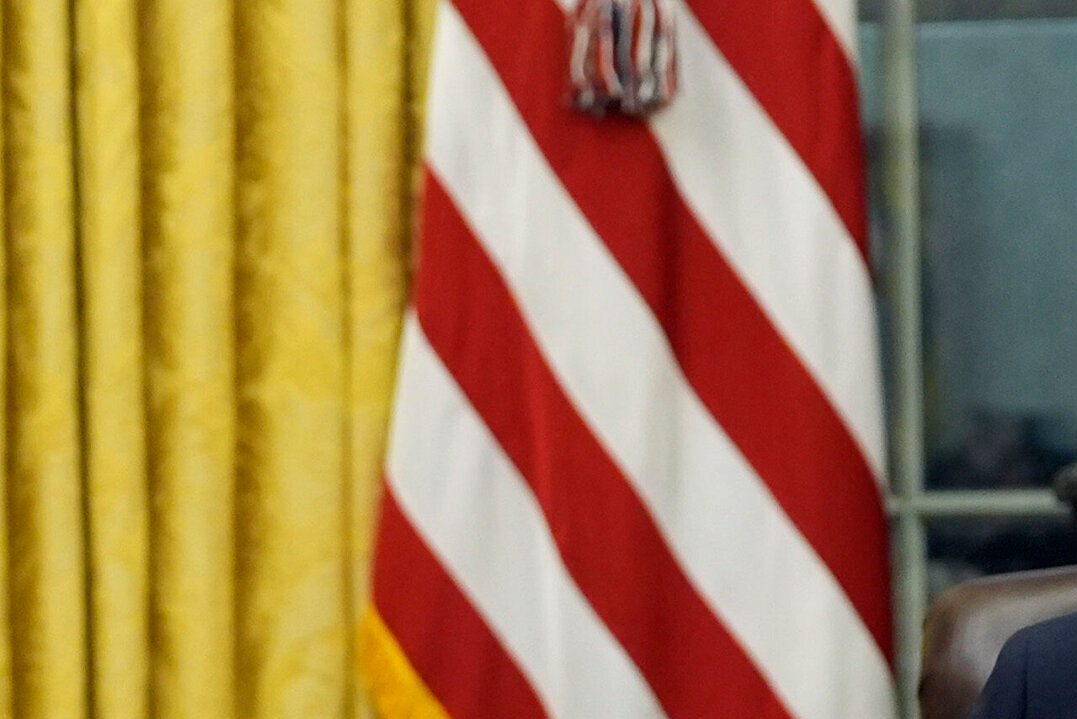Shortly after being sworn into office, President Donald Trump signed several executive orders that affect federal employees, including a federal hiring freeze and returning government workers to the office full-time.
“I’m revoking nearly 80 disruptive, radical executive actions of the previous administration, they’ll all be null and void within about, what, five minutes?” Trump said during the event at Capital One Arena in D.C., after the parade had been moved indoors due to frigid temperatures in the area. The jubilant crowd cheered.
Trump said he was issuing a temporary hiring freeze “to ensure that we’re only hiring competent people who are faithful to the American public.” He’s also paused the hiring of any new IRS agents and required the return of federal workers to the office.
So, what will the executive orders mean in the immediate and long-term future to federal workers, many of whom live in the D.C. region?
Jason Miller, executive editor for WTOP’s sister station Federal News Network joined anchor Dimitri Sotis shortly after the executive orders were signed.
What should federal workers expect? Federal News Network’s Jason Miller offers perspective
On the order mandating the end of telework, Miller said, “There’s a lot of anxiety about it — what will it mean, how many days do I need to be in the office, will we even have enough room in the office?”
Miller said the one paragraph “Return to In-Person Work” directive includes the phrase “provided that the department and agency heads shall make exemptions they deem necessary.”
“Basically, if your office doesn’t have enough room, your agency head can say, ‘Hey, we’re still going to stick with telework, because that’s what makes the most sense for our services,’” said Miller.
Miller suggested government employees pause before acting.
“First of all, wait and see how your management reacts,” Miller said. “Remember, just because the politicos say, ‘Do this,’ there is downward effect. It does take a long time to get down to the people who work day in and day out, and the managers, because those are all career people.”
Miller disputed some of the claims Trump and his supporters have been making about the federal workforce.
“Keep in mind, more than 54% of all federal workers are already at work, full-time,” Miller said. “This false narrative that the president and some people have been saying that only 6% of people are at their desks is just kind of silly.”
In putting the executive orders into perspective, “What this will do is give the new managers, the political appointees, the ammo to say, ‘The president says you need to come, so therefore you need to come,’” Miller said. “The Biden administration was saying to the appointees ‘you make the decision that’s best for your agency.’ It’s not that the Trump administration has taken that out, but they’re just kind of pushing, pushing harder.”
What about the hiring freeze?
Miller said there will be hiring freeze for 90 days, in which the Office of Personnel Management and Budget will meet with the “administrator for the U.S. DOGE service.”
“They will submit a plan to reduce the size of the federal workforce, through what they call ‘efficiency improvements and attrition,’” Miller said.
While originally pitched as an outsider task force, Trump signed an executive order Monday installing the Department of Government Efficiency (DOGE) within the White House, temporarily, Federal News Network reported.
Even before Trump signed the executive orders, lawsuits were filed Monday claiming DOGE, which will be led by Elon Musk, violates federal transparency rules.
Public Citizen, State Democracy Defenders Fund and the American Federation of Government Employees filed suit against Trump and OMB, saying DOGE violates the law regulating the establishment and operation of federal advisory committees.
“DOGE’s members do not have a fair balance of viewpoints, meetings are held in secret and without public notice, and records and work product are not available to the public,” according to a press release from the groups involved in the lawsuit.
In a statement, the American Federation of Government Employees’ National President Everett Kelley said Trump is more interested in “sowing chaos” than improving government efficiency.
“There is no legitimate rationale for slashing the size of the federal workforce. The number of federal workers has grown by roughly 6% over the past 50 years, while the U.S. population served by the federal government has increased by 57%. Meanwhile, spending on the vast shadow workplace of federal contractors has ballooned to account for 11.4% of the federal budget — nearly $760 billion annually — while just 4.3% of the budget goes to pay federal employees,” Kelley said in the statement.
‘Efficiency is not a new concept’
As government employees wait to see how the new executive orders affect their daily lives, Miller suggested they “pay attention to what your agency does for efficiency.”
“This is not a new concept,” Miller said. “Everyone has always been about efficiency. You’ve never had an administration say, ‘Hey, let’s be inefficient.’”
Miller said government employees can keep their eyes open and suggest ways for their agency to be more efficient.
“If you’ve always said, ‘You know, this has bugged me for years, what if we could fix it in this way, maybe we could have fewer people, or maybe the people can move around,” Miller said.
In his 25 years covering the federal government, Miller said “I’ve never heard someone say, ‘We have too many people.’ I’ve never heard someone go, ‘I have too many people in my office.’”
Get breaking news and daily headlines delivered to your email inbox by signing up here.
© 2025 WTOP. All Rights Reserved. This website is not intended for users located within the European Economic Area.



